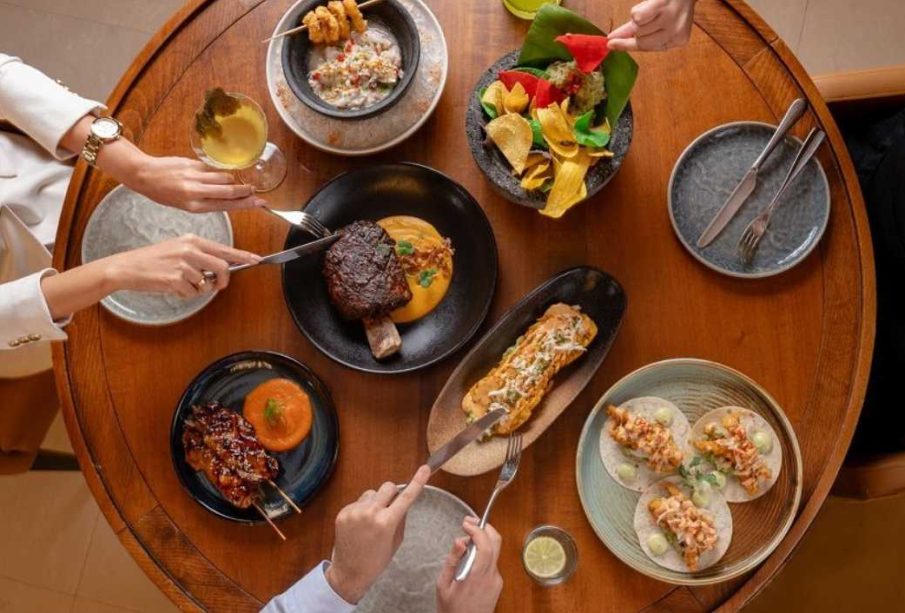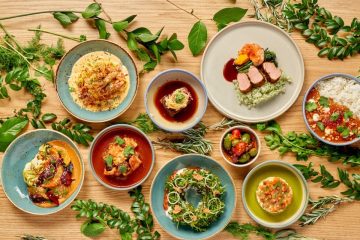The Joy of Food and Recreation: How Culinary Experiences Enrich Our Lives

Food and recreation are two of the greatest pleasures in life. Both connect people, create memories, and offer opportunities to explore culture and creativity. When combined, they form an experience that goes far beyond eating—it becomes a form of leisure, a lifestyle, and even an adventure. Whether it’s a picnic in the park, a food festival in the city, or cooking a new recipe at home, the fusion of recreation and food is one of the most enriching ways to enjoy everyday life.
Food as a Social Recreation
At its core, food is about community. Sharing meals has always been one of the most important forms of human connection. Across cultures and generations, people gather around tables to celebrate, to comfort, and to bond.
Dining out is one of the most popular recreational activities. Restaurants, cafés, and street food markets provide more than just nourishment—they create spaces for people to relax, connect, and experience something new. Families bond over Sunday brunch, friends meet for coffee, and travelers seek out local delicacies as part of their adventures.
Cooking together is another form of recreational dining. Couples, friends, and families increasingly enjoy preparing meals as a shared activity. From kneading dough to trying exotic spices, cooking transforms into entertainment when approached with curiosity and collaboration.
Food Tourism: Exploring Culture Through Cuisine
For many, food is one of the most exciting parts of travel. Food tourism—sometimes called culinary tourism—is a booming sector of the recreation industry. Travelers seek authentic food experiences to understand the history and traditions of a place.
In Italy, visitors may join pasta-making classes in a Tuscan farmhouse. In Japan, sushi workshops and tea ceremonies introduce travelers to centuries-old practices. In Mexico, street tacos and vibrant food markets reveal the nation’s spirit and diversity. These experiences allow people not just to eat, but to learn, participate, and connect with local culture.
Food festivals also attract travelers worldwide. From Oktoberfest in Germany to the Taste of Chicago, these events blend recreation, entertainment, and gastronomy into immersive cultural experiences.

The Rise of Outdoor Food Recreation
Eating outdoors has become a symbol of leisure and relaxation. Picnics, barbecues, and food trucks bring together recreation and cuisine in natural or urban settings.
Picnicking, for example, is one of the simplest yet most rewarding forms of food-based recreation. It combines the pleasure of eating with fresh air, scenic views, and social bonding. Families spread blankets under trees, couples enjoy romantic meals by the lake, and groups of friends turn a simple picnic into a mini-celebration.
Barbecues are another popular form of outdoor food recreation. More than just cooking, they are social gatherings filled with laughter, music, and games. From backyard grills to community cookouts, barbecues embody the joy of food and play.
Meanwhile, food trucks and outdoor markets have transformed city streets into hubs of casual dining. People can stroll through parks or city squares, sampling everything from artisanal ice cream to gourmet tacos, turning a simple meal into a recreational outing.
Food as Creative Recreation
Cooking is not just a necessity—it is an art form and a creative outlet. Recreational cooking classes, culinary workshops, and at-home experiments allow people to express themselves through food.
Baking, for instance, has grown into a popular hobby, with many people finding joy in decorating cakes, experimenting with flavors, and sharing their creations on social media. Cooking challenges—such as trying new international cuisines or re-creating restaurant dishes at home—add a playful, adventurous element to food.
Food photography and blogging have also turned eating and cooking into recreational pastimes. Sharing meals online allows people to showcase creativity, exchange recipes, and inspire others. For many, the joy lies not only in eating but in presenting and celebrating food as an experience.
The Wellness Dimension: Healthy Eating as Recreation
Food recreation does not always have to be indulgent—it can also promote health and wellness. The rise of farm-to-table dining, plant-based diets, and organic food markets reflects a growing trend toward mindful eating.
Visiting farmers’ markets, for example, is a recreational activity that supports local communities while promoting healthy lifestyles. Shoppers enjoy strolling through colorful stalls, discovering seasonal produce, and chatting with farmers. It transforms grocery shopping into a leisurely, enriching outing.
Cooking healthy meals can also be a recreational pursuit. People experiment with fresh ingredients, superfoods, and global flavors to create nutritious yet delicious dishes. Wellness retreats and cooking vacations combine recreation, relaxation, and education by teaching participants how to prepare healthy meals while enjoying scenic destinations.
Food and Family Recreation
For families, food is often at the heart of recreation. Cooking with children is a way to teach life skills, creativity, and cultural appreciation. Baking cookies, making homemade pizzas, or growing herbs together creates not only meals but also memories.
Family traditions around food also serve as recreational rituals. Holiday dinners, weekend breakfasts, or cultural celebrations bring generations together through shared dishes and traditions. These rituals create continuity and connection while reinforcing the joy of food.
Food, Recreation, and Sustainability
As awareness of sustainability grows, recreational food activities are also evolving. People are seeking experiences that align with eco-friendly values. Farm visits, for example, allow families to learn about sustainable agriculture while enjoying fresh meals. Community gardens combine recreation with food production, where neighbors grow vegetables, share harvests, and strengthen social ties.
Cooking with seasonal, local ingredients has become a popular recreational practice that supports sustainability. It encourages creativity while reducing environmental impact. For many, eating consciously is not just a health choice—it is a way of life that brings meaning and satisfaction.
The Future of Food and Recreation
Looking ahead, the fusion of recreation and food is likely to expand in innovative ways. Virtual cooking classes allow people to connect with chefs worldwide without leaving home. Augmented reality dining experiences are beginning to blend entertainment and cuisine. Sustainable food practices will increasingly shape recreational food culture, with more emphasis on plant-based meals, local sourcing, and waste reduction.
Technology will also continue to transform food recreation. From apps that recommend recipes based on what’s in your fridge to immersive dining experiences that blend storytelling and cuisine, the possibilities are endless.
Above all, the trend is clear: food is no longer seen only as fuel for the body but as a source of joy, creativity, and connection.

Conclusion
Food and recreation are inseparable threads in the fabric of human experience. Together, they create joy, foster relationships, and allow exploration of cultures and creativity. Whether through travel, cooking, outdoor dining, or family traditions, food as recreation enriches our lives in countless ways.
In a world where daily routines can often feel rushed and stressful, food-based recreation reminds us to slow down, savor the moment, and celebrate the simple pleasures of life. After all, eating is not just about nourishment—it is about enjoyment, discovery, and the shared experiences that make life meaningful.











